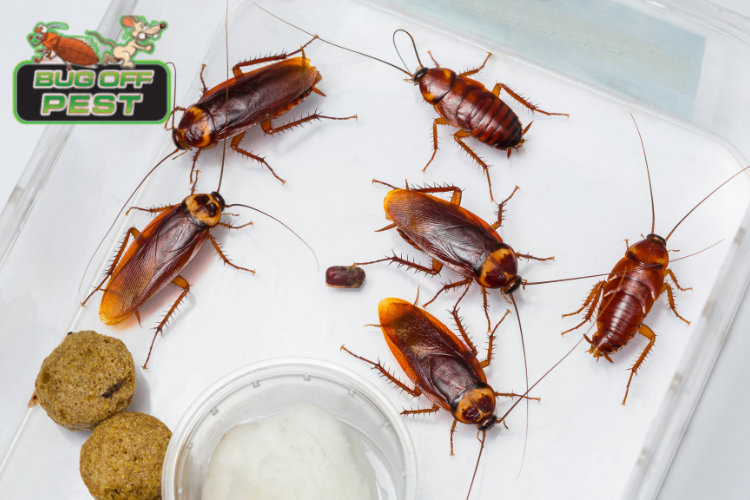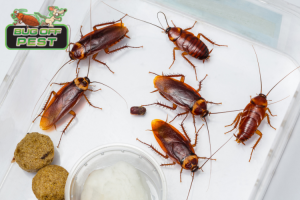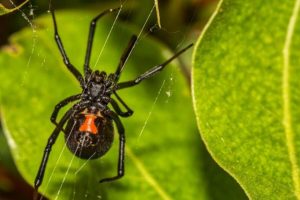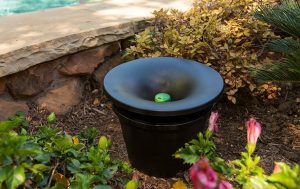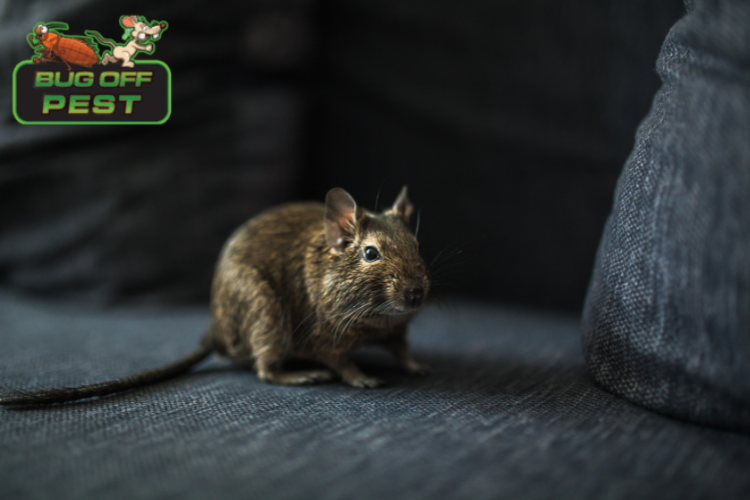The German cockroach is a tiny pest, but it can stress out any homeowner. These tough bugs are well known for living through tough times and can quickly fill homes and businesses. Managing a German cockroach infestation needs several steps. It requires both prevention measures and ways to get rid of them effectively. This guide will help you learn how to deal with these unwanted guests. You will get the tools you need to take back your home or work area from the German cockroach infestation.
Understanding German Cockroaches
German cockroaches, also known as Blattella germanica, are light brown to tan bugs. They have two dark stripes that run along their back. These insects have six legs, long antennae, and wings, but they seldom fly. Adults are usually about ½ to ⅝ inches long.
They come from Southeast Asia but have now spread all over the world. They do well in warm, humid places where there is food and water. Their ability to adapt makes them a tough pest. They are common in homes and businesses, where food is stored or prepared.
Identifying Characteristics: Size, Color, and Markings
German cockroaches, also known as Blattella germanica, are easy to recognize because of their unique features. Adults are about ½ to ⅝ inches long. They have a light brown to tan body with two dark stripes. These stripes run almost parallel along their pronotum, which is the shield-like part behind their head. The stripes are often darker than the rest of their body. This helps people tell them apart from other cockroach species.
Along with the dark stripes, German cockroaches have long antennae that stick out further than their body. These long antennae help them find their way, locate food, and feel what’s around them. They also have six legs that are covered with spines.
These spines help them move easily over different textures and surfaces.
Baby cockroaches, called nymphs, look a bit different. They are much smaller, usually less than ¼ inch long when they first hatch. They also have dark stripes, but their body color is darker brown, almost black. As they grow and molt, their color becomes lighter.
Common Habitats and Behaviors
German cockroaches like areas that are warm, damp, and have a steady food supply. This makes places like kitchens, bathrooms, and laundry rooms common spots for them to infest. They prefer to hide in dark and protected areas. You can often find them in gaps and cracks, behind appliances, under sinks, inside cabinets, and in wall voids.
These cockroaches are mostly active at night. They come out from their hiding spots to search for food. During the day, they stay hidden, which can make it hard to notice an infestation until their numbers grow. Because they reproduce quickly, they can set up in a place before people realize there is a problem.
German cockroaches prefer warm, tropical environments. However, they can survive in different temperatures by hiding in heated buildings when it gets colder. Their ability to live in many conditions, along with their focus on human-occupied spaces, makes them common pests in homes, apartments, restaurants, hotels, and other places.
The Lifecycle of German Cockroaches
The life cycle of a German cockroach has three main stages: egg, nymph, and adult. This cycle can take just 100 days to finish in perfect conditions. The temperature and food they can find are very important for how quickly they grow. They reproduce quickly and have many generations at the same time. This helps them create large infestations in a short time.
Female German cockroaches are very good at breeding. They can make many egg cases during their life. These egg cases, called oothecae, are held by the females until just before the eggs hatch. This way, the young ones have a better chance of survival. This breeding method is different from some other cockroach species. It helps them become a big problem for homes.
From Egg to Adult: Stages of Development
The life cycle of the German cockroach starts with an egg found in an egg case called an ootheca. A female German cockroach can make many oothecae in her life. Each ootheca holds about 30-40 eggs. Unlike some cockroach species that put their egg cases in hidden spots, female German cockroaches carry theirs until just before the eggs hatch. This keeps the young nymphs safe and helps them survive better.
When they hatch, the nymphs are small and dark. They will shed their skin several times as they grow. Each time they shed is called an instar. The German cockroach nymphs usually go through 5-7 instars before they become adults. As they grow, the nymphs look for food and water, staying close to where they hatched because that’s where resources are easy to find.
As the nymphs molt, they slowly take on the light brown color and parallel stripes that we see in adult German cockroaches. Once they become adults, they can reproduce and start the cycle again. Their short life cycle and the ability of females to create many oothecae help them build large populations that can last a long time.
Reproduction Rates and Lifespan
Female German cockroaches exhibit remarkable reproductive capabilities, contributing significantly to their rapid population growth. A single female can produce up to 8 egg capsules, or oothecae, in her lifetime. Each ootheca, carried externally by the female until kurz before hatching, contains an average of 30-40 eggs. This high reproductive output, combined with their relatively short lifespan, enables German cockroach populations to explode in favorable conditions.
Gender
Lifespan
Male
90-140 days
Femalex`
140-280 days
Despite this difference in longevity, both male and female German cockroaches contribute equally to the infestation cycle. Males, though shorter-lived, play a crucial role in fertilization, ensuring the continuation of the species. Factors such as temperature, food availability, and exposure to pesticides can impact their lifespan and reproductive rate. Understanding these factors is critical for implementing effective control strategies.
Health Risks Associated with German Cockroaches
German cockroaches are more than just a nuisance. They can create serious health problems, especially for people with breathing issues or weak immune systems. These bugs can dirty food and surfaces with germs, parasites, and harmful substances they find in dirty places. This can cause food poisoning, stomach issues, and other problems.
Besides dirtying food, German cockroaches make the air inside homes worse. Their droppings, skin they shed, and saliva have strong allergens. These can trigger asthma attacks, allergies, and skin problems like eczema. Kids and people with breathing issues are most at risk from these
Allergies and Asthma: The Hidden Health Threat
German cockroaches are a big health risk because of the strong allergens in their droppings, saliva, and shed skins. These allergens can easily get into the air and be inhaled. They can cause problems from mild skin irritation and a runny nose to serious breathing issues, especially in young children. As these cockroaches crawl through dirty places like sewers and garbage, they pick up allergens on their bodies and spread them around their environment.
One serious health effect linked to German cockroach allergens is asthma, particularly in children. Even small amounts can cause the immune system to react. This leads to swelling and sensitivity in the airways. Kids living in homes with cockroach problems are more likely to develop asthma. They may have more frequent and worse attacks and need more medicine to control their condition.
Allergic reactions to German cockroaches can show up in different ways. Common symptoms include sneezing, coughing, wheezing, trouble breathing, skin rashes, and itchy, watery eyes. In extreme cases, a person might face anaphylaxis, which needs urgent medical help. It’s vital to notice and deal with a German cockroach infestation quickly to protect the health of everyone, especially young children, who live in that space.
Disease Transmission: From Cockroaches to Humans
German cockroaches carry many harmful germs. This includes bacteria, viruses, and parasites. Because of this, they help spread diseases. While looking for food and places to hide, these bugs crawl through dirty areas like trash cans, sewer systems, and rotting waste. They pick up harmful germs on their bodies. Later, they can pass these germs to people through touch, food, or surfaces.
Food poisoning is a common result of German cockroach infestations. They can make food unsafe with bacteria like Salmonella, Staphylococcus, and E. coli. This can lead to symptoms such as nausea, vomiting, diarrhea, and stomach pain. In serious cases, food poisoning can be dangerous, especially for people with weak immune systems.
The chance of spreading disease goes up with more cockroaches and less cleanliness. Even if you cannot see cockroaches, their droppings and shed skins can still carry germs for a long time. This creates a constant health danger. It is very important to deal with these infestations quickly. Taking steps to prevent them can help lower the health risks from these disease-carrying pests.
Signs of a German Cockroach Infestation
Spotting a German cockroach infestation early can be hard. This is because they are active at night and like to hide. However, there are clear signs that can help you notice they are around. Being aware of these signs is important. It lets you act fast to stop the problem from getting worse.
Some obvious signs include seeing live cockroaches, especially during the day. If you see many cockroaches when it is light out, this means there could be a big problem. You need to take action quickly. Other signs include finding their droppings or shed skins. These also suggest a hidden infestation that needs a good inspection to find their hiding places.
Spotting German Cockroaches in Your Home
Adult German cockroaches are the ones you see most often. However, their young ones, called nymphs, are smaller and darker. Nymphs can also show that there is an infestation. You might find them near food and water sources. They often come out to look for food while the adults stay hidden. If you see nymphs, it means there is active breeding and you need to act quickly.
Another sign of German cockroaches is their egg cases, known as oothecae. These small, brown, purse-like capsules are usually found in warm and humid spots. Look for them under sinks, behind appliances, and in cracks near food storage. Finding these egg cases means there is a breeding population. If not dealt with, this could lead to a large infestation.
In severe cases, you may notice a musty smell from German cockroaches. This odor comes from their pheromones and waste. You can smell it more in closed spaces like cabinets and pantries. A faint smell might not be a big deal, but a strong musty odor could mean there is a serious infestation that needs professional help.
Telltale Damage: What to Look For
Besides seeing cockroaches, there are some subtle signs that can show you have a German cockroach infestation. One sign is their droppings. These droppings look like small, dark specks. They often remind people of ground coffee or black pepper. You can usually find these droppings near food sources, in drawers and cabinets with food, and along baseboards where cockroaches move.
Another clear sign is shed skins. These look like translucent, empty shells. German cockroach nymphs shed their skins several times as they grow, leaving these behind in their hiding places. Finding shed skins near cracks, crevices, or behind appliances means there is likely an active infestation and that a thorough inspection is needed.
Using sticky traps can help you confirm your concerns and find areas where cockroaches are active. You should place the traps in locations where you think they might hide, like under sinks, near trash cans, and behind furniture. These traps capture cockroaches, showing evidence of their presence and helping you understand how big the infestation is. Checking these traps regularly helps you keep track of numbers and see how well the control methods work.
Preventative Measures to Keep German Cockroaches Away
Preventing a German cockroach infestation is much better and less stressful than dealing with one that has already happened. Homeowners and renters can lower the chance of these pests moving in by using some simple preventative steps. These steps focus on getting rid of what attracts cockroaches, like food, water sources, and hiding places.
Keeping your home clean and organized is very important. You should clean surfaces often, especially in places where you prepare and store food. This helps remove crumbs and spills that draw in cockroaches. Storing food properly in airtight containers and putting away perishable items quickly also helps limit what cockroaches can eat. Keeping things clean and reducing their hiding spots makes the environment unfriendly for German cockroaches.
Sanitation and Hygiene Best Practices
Good sanitation is the best way to fight German cockroaches. Keeping your space clean takes away the food source they need to live. It is important to clean surfaces often, especially in the kitchen. You should wipe down counters, stoves, and sinks after using them. This way, no food debris or spills are left to attract these pests.
Proper food storage is also very important. Do not leave food out on counters or in open containers. Use airtight containers for dry goods, pantry items, and leftovers. Refrigerate perishable food right away to stop cockroaches from getting a meal. Clean out the fridge regularly and throw away old food to remove things that attract them.
Securing Your Home: Entry Points and Hideouts
Keeping your home clean is very important. It is also key to close up places where German cockroaches can get in. These clever bugs can fit through very small cracks and holes. They can enter your home through gaps around windows, doors, pipes, and utility lines.
First, check the outside of your home. Look carefully at spots where pipes and wires come in. Fill any gaps or cracks with caulk or weather stripping. This helps stop cockroaches from getting in. Make sure metal strips around windows and doors work well and close tightly.
Be aware that cockroaches can sneak inside without you noticing. Check grocery bags, cardboard boxes, and used appliances for any signs of them before you bring them in. If you live in an apartment building, it is very important to seal cracks and holes around shared walls, plumbing, and electrical outlets. Regularly checking these spots and fixing any gaps quickly will help keep these pests from entering your home.
The post Identifying and Eliminating German Cockroaches appeared first on Bug Off Pest.

